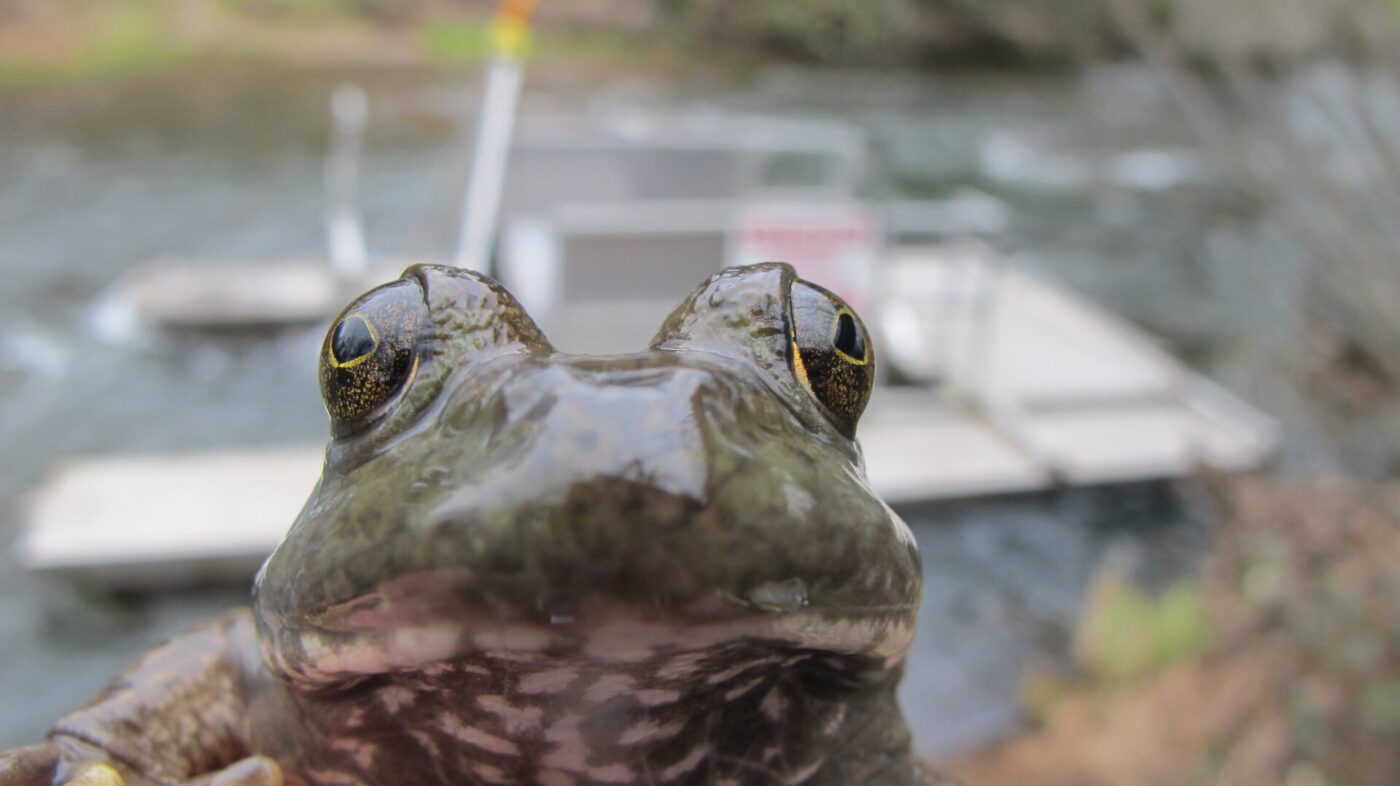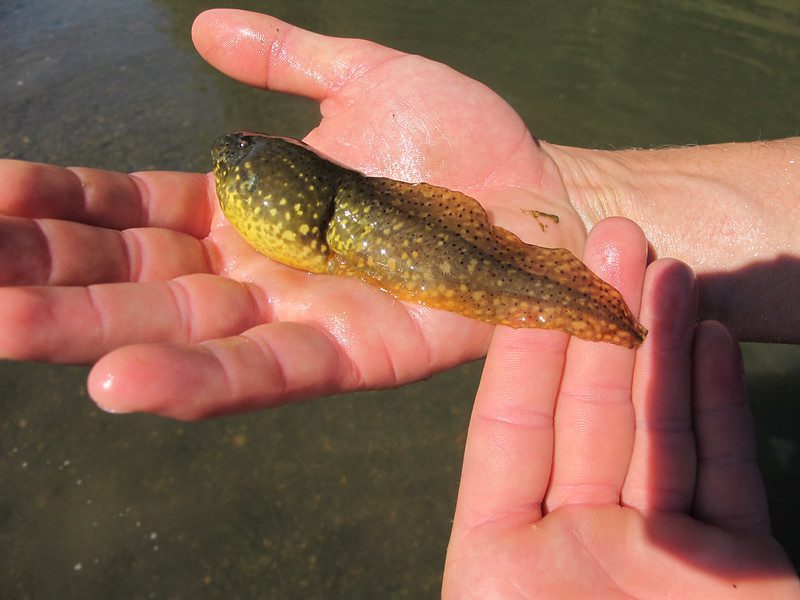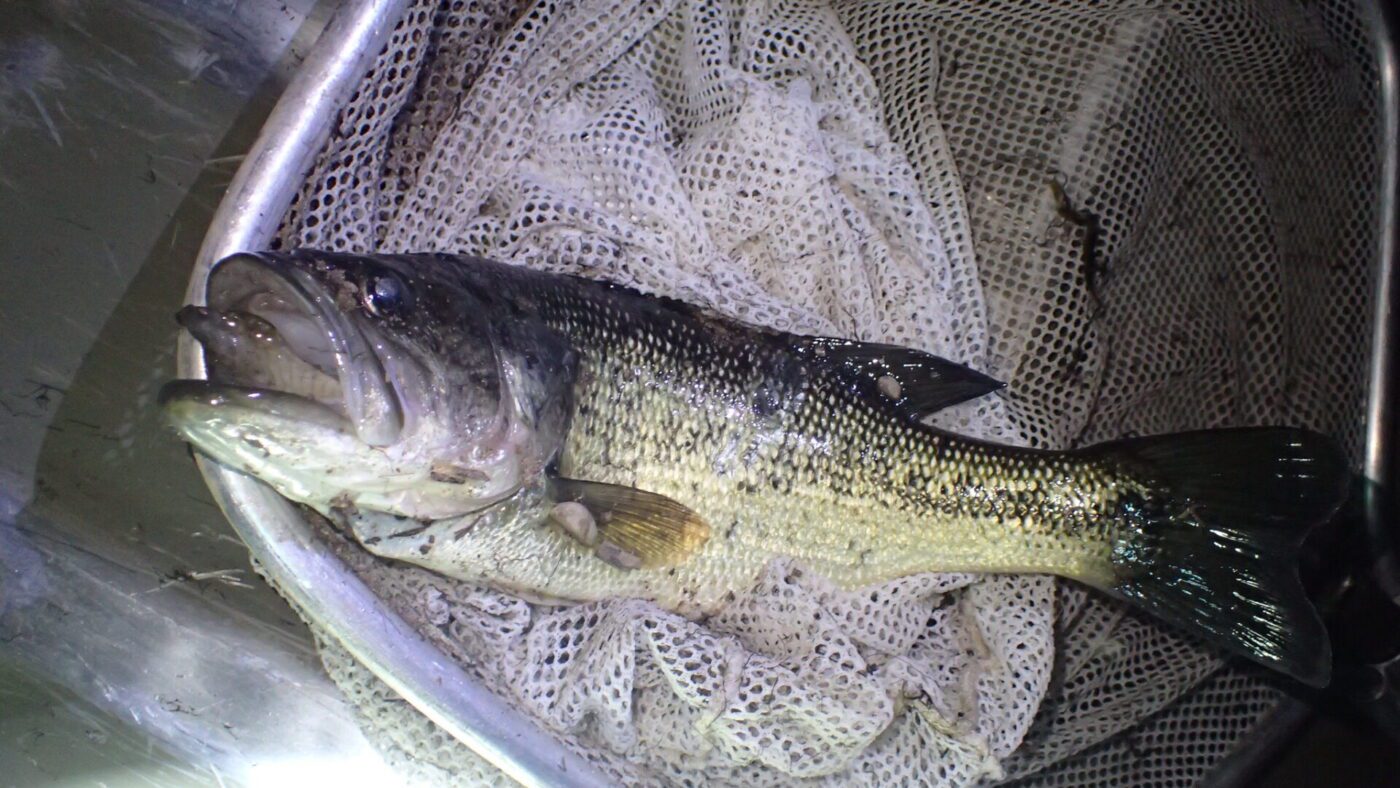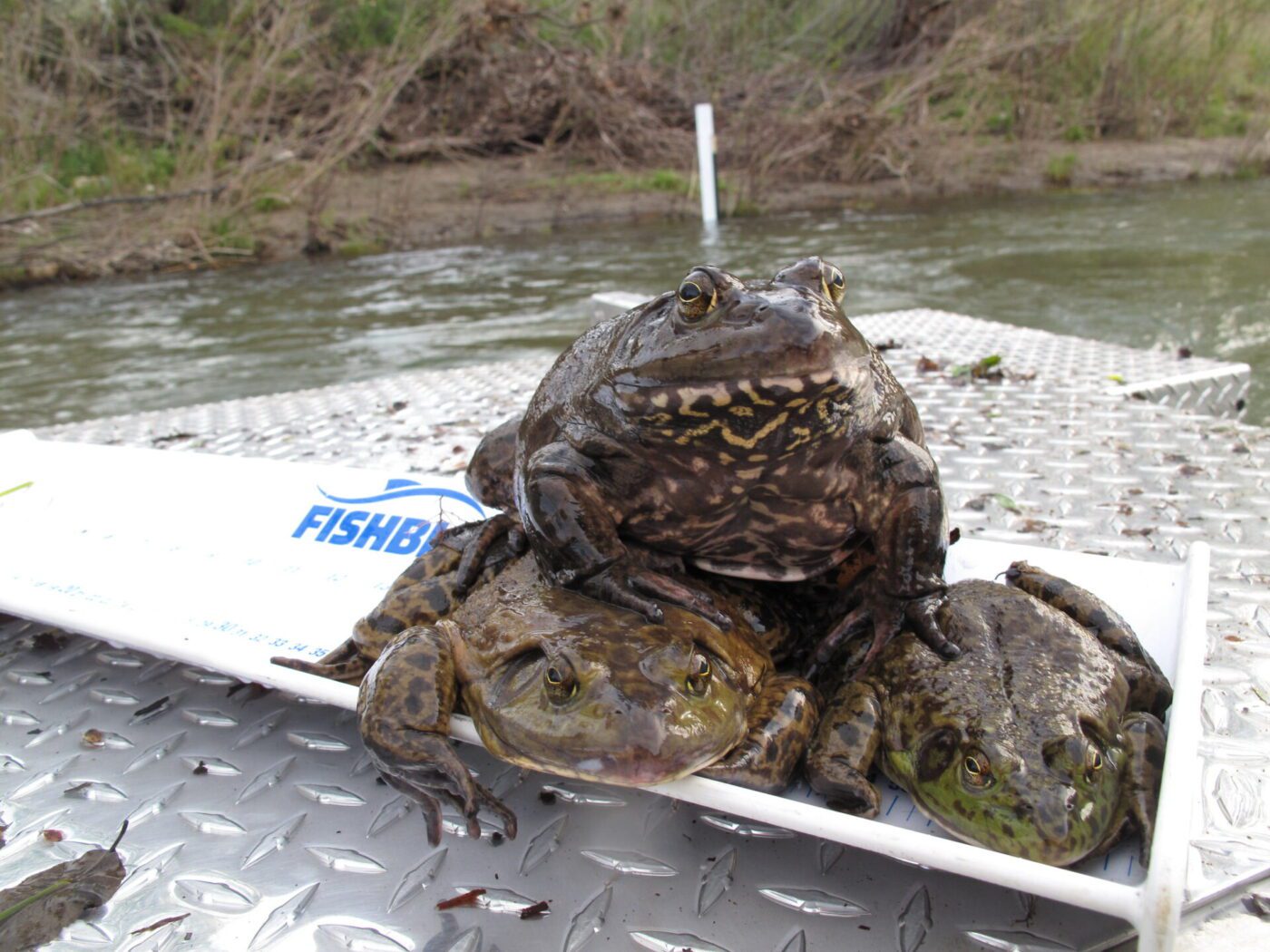Monday September 4, 2023

American bullfrogs (Lithobates catesbeianus) rode on the backs of gold miners to take up a stake in California’s water resources at the turn of the 20th century, later becoming one of the world’s worst invasive species. Frog legs were relatively common in the pre-1900 American diet, evidenced by tens of thousands of kilograms of frogs annually harvested in California for consumption and exportation throughout the United States. High harvest numbers of California’s (now threatened) native red-legged frog (Rana draytonii) population during the gold rush drove numbers down and promoted extirpation throughout their range. This instance likely prompted bullfrog introduction to the state as a compensatory food resource and it wasn’t long before their loud mating calls provided an acoustic backdrop to miners toiling for fortune in the state’s streams. Originally native to eastern North America, the bullfrog is one of the largest frog species in the world, typically weighing two to three pounds and measuring up to eight inches long. Their tadpoles grow up to six inches long, but a record-breaking tadpole found in Arizona measured in at a whopping 10 inches – taller than the size of two soda cans stacked on top of each other! With these large sizes come sizable mouths and appetites, allowing bullfrogs to rise as formative predators of native animals in the aquatic food chain. Bullfrogs can consume anything ranging from the typical suspects like algae, insects, and aquatic eggs to exotic diet items like rodents, birds, and bats – anything they can fit in their mouths.

In addition to their hearty appetites, bullfrog reproductive capacity, dispersal ability, and secretions contribute to their success as an invasive species. Female bullfrogs can lay egg clutches up to twice a year (up to 20,000 eggs per clutch) that hatch within a week after they are laid by the female. Once hatched, tadpoles spend anywhere between four months to two years in this stage before metamorphosing into adults. Not only are these frogs reproductively prolific, but once they are mobile, they can move or migrate distances of up to six miles. Carrying their large appetites across geographic regions threatens many native aquatic species in the state of California and across the West. While modified ecosystems of urbanized areas are unsuitable for many native fish and amphibian species, bullfrogs have found an oasis. Where these species overlap, bullfrogs, across all stages of their life, frequently outcompete everything else, including frogs, fish, and other native critters. In addition, as adults, they prey on young life stages of other amphibian species. Ultimately, non-native bullfrogs alter natural population dynamics and community structure. Introduced bullfrogs also lack native predators, meaning their populations are left uncontrolled. Some scientists believe that the secretions that bullfrog tadpoles produce make them unpalatable to many fish species. Northern pike (Esox lucius) and largemouth bass (Micropterus salmoides) prey on bullfrog tadpoles. However, they are not viable bullfrog control options because they are not native to most of the bullfrog’s introduced range (including California).

Bullfrog introduction challenges are not limited to North America as they have been introduced (along with many other species) as a food source globally, bringing with them their insatiable appetites and disease. Bullfrogs are vectors of a deadly fungus, Batrachochytrium dendrobatidis (Bd), that causes a disease called chytridiomycosis. This disease targets and damages the skin, disrupting water absorption and electrolyte balance, ultimately leading to death. Bd is a global issue that has been linked to the decline of over 500 amphibian species, reducing the biodiversity of amphibians all over the world.
Many management actions sought to remediate the effects of bullfrog predation and Bd transmission on amphibian populations with varying levels of success. Rotenone, a common compound used for aquatic species eradication, is effective in killing bullfrog tadpoles but is easily avoided by adults who simply jump out of the water. Another tactic to mitigate bullfrog populations is complete removals followed by the draining of the ponds they inhabit. This strategy kills bullfrog tadpoles, but it is time and labor-intensive and does not solve the issue of adults migrating to new locations. Some agencies are taking creative approaches to curbing bullfrog populations by encouraging the public to eat them to help control population numbers. In California, the take of bullfrogs is legal and there is no limit on harvest!

Bullfrogs, in many areas, have proven their resilience to current control and eradication practices. Although their presence is a challenge for native species, there may be a silver lining for researchers. Bullfrogs are a great alternative study subject for native species that are rare or protected. For example, scientists use bullfrog tadpoles as biological indicators to bring attention to concerning trends in aquatic ecosystems, and tadpoles can be proxies for changes in ecosystem health. Bullfrogs are here to stay (for now) so prepare to go gigging and get your frog leg recipes in order.
This post was featured in our weekly e-newsletter, the Fish Report. You can subscribe to the Fish Report here.
